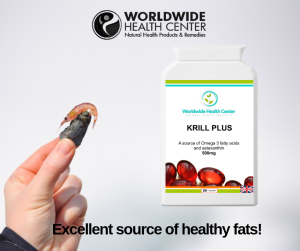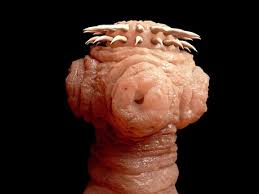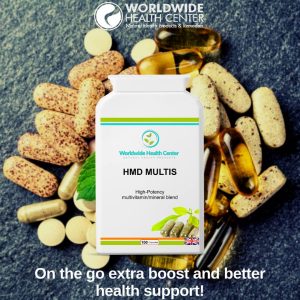Need help? Email us:
- AMINO ACIDS
- Antioxidants
- Blood Sugar Regulation
- Bone and Joint Repair
- BOOKS
- Brain Food & Energy Supplements
- Candida Support
- Cardiovascular Support
- Cholesterol
- Constipation Relief
- Dental Health
- Detox
- Digestive Support
- Eye Support
- Fatty Acids
- Gut Health
- Hair Mineral Analysis
- Heavy Metal Detox
- Herbal Tinctures
- Immune Support
- Liver Support
- METABOLIC TYPING
- Multivitamin & Mineral
- Natural antimicrobials and parasite remedies
- Natural Diuretic
- Probiotics
- Prostate Health
- Tachyon Products
- Uncategorized
- VITAMINS
- WEIGHT LOSS
THE SECRETS OF CURING CANDIDA NATURALLY

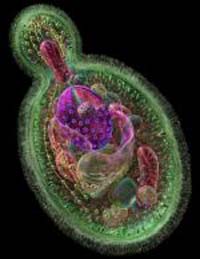 WHAT IS IT?
WHAT IS IT?
Every person lives in a virtual sea of microorganisms, (bacteria, viruses, fungi, etc.). These microbes can reside in the throat, mouth, nose, intestinal tract, almost anywhere; they are as much a part of our bodies as the food we eat. Usually, these microorganisms do not cause illness, unless our resistance becomes lowered.
Candida albicans is a yeast that lives in the mouth, throat, intestines and genitourinary tract of most humans and is usually considered to be a normal part of the bowel flora (the organisms that coexist with us in our lower digestive tract). It is actually a member of a broader classification of organisms known as fungi.
Traditionally fungi are considered plants, but they contain no chlorophyll and cannot make their own food. Fungi tend to inhabit cool to tropical climates and are found in the air we breathe as well as in moist and shady soil, water, manure, dead leaves, fruit, leftover food, and in a wide variety of places and circumstances.
HOW DO YOU GET IT?
Candida albicans prefers people. Candida enters new-born infants during or shortly after birth. Usually, the growth of the yeast is kept in check by the infant’s immune system and thus produces no overt symptoms. But, should the immune response weaken, the condition known as oral thrush can occur as a result. By six months of age, 90% of all babies test positive for Candida. And by adulthood, virtually all humans play host to Candida albicans and are thus engaged in a life-long relationship.
Candida coexists in our bodies with many species of bacteria in a competitive balance. Other bacteria act in part to keep Candida growth in check in our body ecology . . . unless that balance is upset. When health is present, the immune system keeps Candida proliferation under control; but when immune response is weakened, Candida growth can proceed unhindered. It is an “opportunistic organism,” one which, when given the opportunity, will attempt to colonize all bodily tissues. The uncontrolled growth of Candida is known as Candida overgrowth or Candidiasis.
Unfortunately, there are many factors in our modern society that can upset the ecological balance of the body, weaken the immune system and thus allow the yeast to overgrow. Of these, the major risk factors which may predispose one to the proliferation of Candida are:
* STEROID HORMONES, IMMUNOSUPPRESSANT DRUGS such as cortisone which treat severe allergic problems by paralyzing the immune system’s ability to react
* PREGNANCY, MULTIPLE PREGNANCIES or BIRTH CONTROL PILLS which upset the body’s hormonal balance
* DIETS HIGH IN CARBOHYDRATE AND SUGAR INTAKE,
* YEAST AND YEAST PRODUCTS, AS WELL AS MOLDS AND FERMENTED FOODS
* PROLONGED EXPOSURE TO ENVIRONMENTAL MOLDS
* ANTIBIOTICS and SULFA DRUGS Probably the chief culprit of all, antibiotics kill all bacteria. They do not distinguish good bacteria from bad. Antibiotics kill the “good” flora which normally keeps the Candida under control. This allows for the unchecked growth of Candida in the intestinal tract. It is normally difficult to recover a yeast culture from bodily surfaces. However, after 48 hours of taking tetracycline, yeast can be cultured easily from anyone. The prevalence today of Candida may be most directly related to the widespread societal exposure to antibiotics – from prescriptions for colds, infections, acne, and from additional consumption of antibiotic-treated foods such as meats, dairy, poultry and eggs. Notably, antibiotics do not kill viruses; they only destroy bacteria. Yet, they are universally prescribed for all colds, flus and other viral problems. Such indiscriminate and extensive use of antibiotics is not only considered a primary cause of Candida overgrowth, but is recently being found to be responsible for the unbridled development of “killer bacteria.”
The rapid and direct proliferation of the yeast following antibiotic use strongly suggests that the problem of Candida is one which stems from an inner state of imbalance, rather than from an outside attack by a microbe or disease. This is a very important point to understand if one wishes to get rid of an overgrowth problem, suggesting that Candida is not so much a problem as is the body’s own failure to control it!
A SERIOUS PROBLEM
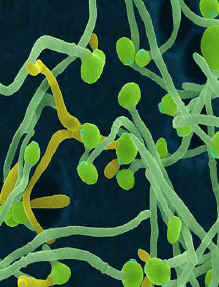 Once begun, if not recognized and treated appropriately, Candida overgrowth can result in a self-perpetuating, negative cycle. Large numbers of yeast germs can weaken the immune system, which normally protects the body from harmful invaders. Even though Candida is part of the ecological balance in the body since birth, it is still recognized by the immune system as a foreign body that needs to be controlled. So, when overgrowth occurs, a chronic stimulation to the immune system results — every second, every minute, every hour, every day, every month, every year — in an attempt by the immune system to regain control. In time, it is believed that this can exhaust the immune system, predisposing one to more serious degenerative processes. Many believe chronic drains on the immune system such as Candida and parasites can play a direct role in the development of cancer and AIDS. Seen in this light, Candida overgrowth should not be taken lightly.
Once begun, if not recognized and treated appropriately, Candida overgrowth can result in a self-perpetuating, negative cycle. Large numbers of yeast germs can weaken the immune system, which normally protects the body from harmful invaders. Even though Candida is part of the ecological balance in the body since birth, it is still recognized by the immune system as a foreign body that needs to be controlled. So, when overgrowth occurs, a chronic stimulation to the immune system results — every second, every minute, every hour, every day, every month, every year — in an attempt by the immune system to regain control. In time, it is believed that this can exhaust the immune system, predisposing one to more serious degenerative processes. Many believe chronic drains on the immune system such as Candida and parasites can play a direct role in the development of cancer and AIDS. Seen in this light, Candida overgrowth should not be taken lightly.
The immune system may concurrently be also adversely affected by poor nutrition, heavy exposure to moulds in the air, as well as an increasing number of chemicals in our food, water and air, including petrochemicals, formaldehyde, perfumes, cleaning fluids, insecticides, tobacco and other indoor and outdoor pollutants. Over 10,000 chemicals have been added to our food supplies alone that were not there just 100 years ago! We do not have the genetic recognition of these substances as foods or as useful additions to our bodies.
Resulting lowered resistance may not only cause an overall sense of ill health, but also may allow for the development of respiratory, digestive and other systemic symptoms. One may also become predisposed to developing sensitivities to foods and chemicals in the environment. Such “allergies” may in turn cause the membranes of the nose, throat, ear, bladder and intestinal tract to swell and develop infection.
Such conditions may lead the physician to prescribe a “broad spectrum” antibiotic . . . which may then further promote the overgrowth of Candida and strengthen the existing negative chain of events, leading to further stress on the immune system and increased Candida-related problems.
WHAT ARE THE SIGNS OF CANDIDA INFECTION?
The result of heightened Candida overgrowth is a list of adverse symptoms of considerable length. Basically, the characteristics of Candida overgrowth fall under three categories, those affecting:
The gastrointestinal and genitourinary tracts
Allergic responses, and Mental/emotional manifestations.
Initially the signs will show near the sights of the original yeast colonies. Most often the first signs are seen in conditions such as nasal congestion and discharge, nasal itching, blisters in the mouth, sore or dry throat, abdominal pain, belching, bloating, heartburn, constipation, diarrhoea, rectal burning or itching, vaginal discharge, vaginal itching or burning, increasingly worsening symptoms of PMS, prostatitis, impotence, frequent urination, burning on urination, bladder infections. But, if the immune system remains weak long enough, Candida can spread to all parts of the body causing an additional plethora of problems such as fatigue, drowsiness, incoordination, lack of concentration, mood swings, dizziness, headaches, bad breath, coughing, wheezing, joint swelling, arthritis, failing vision, spots in front of the eyes, ear pain, deafness, burning or tearing eyes, muscle aches, depression, irritability, sweet cravings, increasing food and chemical sensitivities, numbness and tingling, cold hands and feet, asthma, hay fever, multiple allergies, hives and rashes, eczema, psoriasis, chronic fungal infections like athlete’s foot, ringworm and fingernail/ toenail infections.
In addition, 79 different toxic products are known to be released by Candida, which in itself places a considerable burden on the immune system. These get into the bloodstream and travel to all parts of the body where they may give rise to a host of adverse symptoms.
In Candida overgrowth, the yeast colonies can dig deep into intestinal walls, damaging the bowel wall in their colonization.
Candida can also attack the immune system, causing suppressor cell disease, in which the immune system produces antibodies to everything at the slightest provocation, resulting in extreme sensitivities.
Finally, Candida overgrowth can be dangerous if not controlled. The persistent, constant challenge to the immune system by an ever-increasing, long-term overgrowth of Candida can eventually serve to wear down the immune system and cause a seriously weakened capacity for resistance to disease.
Women are more likely to get Candida overgrowth than are men. This is related to the female sex hormone progesterone which is elevated in the last half of the menstrual cycle. Progesterone increases the amount of glycogen (animal starch, easily converted to sugar) in the vaginal tissues which provide an ideal growth medium for Candida. Progesterone levels also elevate during pregnancy. Men are affected less frequently but are by no means invulnerable.
HOW DO YOU KNOW YOU’VE GOT IT?
Currently, diagnosis is primarily clinical. Since almost everyone has Candida in their bodies, tests for its presence are useless; confirmation of overgrowth is very difficult through laboratory tests. And, since what it does is to paralyze the immune system against it, allergy tests to determine the system’s reaction to it are also ineffectual.
Furthermore, the results of the yeast imbalance — the combined effects of different hormones, poisons generated and released by the yeast into the bloodstream, and the confusion created in the immune system — produces such a wide variety of symptoms and which are seemingly so unrelated (such as wheezing, depression and fungus infection under fingernails) that a definite diagnosis cannot be made from any specific pattern of signs and symptoms.
Conclusive laboratory tests have not yet been developed, even though there are a number of tests that can help in the diagnosis. The patient’s history and symptoms are usually the key to arriving at a diagnosis, and Dr Crook’s Candida Questionnaire is extremely helpful as it enables the patient to score their symptoms and arrive at a number – anything above 180 for women, and 140 for men is highly significant and represents the majority of symptoms that relate to this condition. There are other testing procedures that I use in clinical practice, mainly bio-dermal screening using the VEGA (see http://www.naturaltherapycenter.com/pages/Allergy-Testing.html). When an ampule of Candida is placed in the honeycomb of the VEGA EXPERT and the probe placed on an acupoint of a finger, it is very clear when a patient “resists” as the conductivity drops. What I have also found time and time again in over 600 Candida patients that I have tested to date is that they all react to yeast, mushrooms, wine and beer as well when tested. In fact, many times I stumble upon Candida while conducting food intolerance testing using the VEGA, and when finding that mushrooms and yeast come out positive, I immediately test for Candida, which is also positive. I personally find the VEGA a very useful diagnostic device that can answer a lot of questions that more traditional laboratory testing cannot.
Another method of testing for Candida is to use a form of Kinesiological muscle testing called AUTONOMIC RESPONSE TESTING (see http://www.naturaltherapycenter.com/pages/Autonomic-Response-Testing-%28ART%29.html). Autonomic Response Testing (ART) grew out of the importance of detecting and correct problems of the autonomic nervous system. ART allows the doctor to correct the problems of the ANS and to help restore the self-regulating mechanism of the body allowing the patient to return to a state of health. ART is a system of evaluation and treatment developed by Dietrich Klinghardt, MD, Ph.D. and Louisa Williams, DC, ND. Dr Klinghardt is a German trained physician who also has a Ph.D. in neurology. ART uses Applied Kinesiology, Electroacupuncture (EAV), O-Ring testing, Nogier pulse, Chinese pulse, heart rate variability and other techniques to assess the health or dysfunction of the autonomic nervous system.
Dr Klinghardt believes that many practitioners using kinesiology or muscle testing in their practice are often getting inaccurate information because the autonomic nervous system is not functioning properly. In ART, this condition is called ‘blocked regulation’ and refers to the inability of the ANS to self-regulate and is caused by 7 common factors. These include: undiagnosed food allergies, heavy metal toxicity, petroleum chemical toxicity, chronic unresolved infections and scars, temporomandibular joint dysfunction (TMJ), unresolved psychological stress, and electromagnetic stress. Dr Klinghardt has developed specific tests for these factors and treatments to correct them. ART is also a good way of detecting whether Candida is prevalent, and the effect that it is having on the Autonomic Nervous System and other organ systems of the body.
CASE HISTORIES
 There is still a lot of controversy around the topic of Candida, and I am the first to agree that we do not have all the answers. One thing that I have witnessed in clinical practice, however, is the astounding recovery that many of these so-called Candidiasis patients make when placed on a Candida Treatment Protocol. These would include difficult cases that have been through the orthodox medical mill, seeing many different specialties without positive effects. One case that I remember is a 32 year old woman who had such a bad case of halitosis that when I approached her to examine her throat I thought that I was surrounded by rotting corpses! Such was the degree of her bad breath that she had NEVER dated in her life for this reason. My mind never even thought of Candidiasis initially. As a starting point, I suggested that she undergo an alkaline detoxification fast with fresh fruit, salads, steamed vegetables, fresh vegetable juices and home-made vegetable soups. This she did for 15 days. During the last day of the fast she went out with her friends to celebrate her birthday, and drank a glass of wine. She phoned me the following morning complaining of a bad headache, muscle pains, bloating, and an irritation in her throat. This is when my thinking began to point towards Candida, as I thought that the yeast in the wine had probably aggravated the condition. I asked her to come in immediately – testing on the VEGA showed a positive reaction to Candida, mushrooms and yeast, and her score on the Crook’s Candida Questionnaire was 356, probably the highest score I have ever seen!
There is still a lot of controversy around the topic of Candida, and I am the first to agree that we do not have all the answers. One thing that I have witnessed in clinical practice, however, is the astounding recovery that many of these so-called Candidiasis patients make when placed on a Candida Treatment Protocol. These would include difficult cases that have been through the orthodox medical mill, seeing many different specialties without positive effects. One case that I remember is a 32 year old woman who had such a bad case of halitosis that when I approached her to examine her throat I thought that I was surrounded by rotting corpses! Such was the degree of her bad breath that she had NEVER dated in her life for this reason. My mind never even thought of Candidiasis initially. As a starting point, I suggested that she undergo an alkaline detoxification fast with fresh fruit, salads, steamed vegetables, fresh vegetable juices and home-made vegetable soups. This she did for 15 days. During the last day of the fast she went out with her friends to celebrate her birthday, and drank a glass of wine. She phoned me the following morning complaining of a bad headache, muscle pains, bloating, and an irritation in her throat. This is when my thinking began to point towards Candida, as I thought that the yeast in the wine had probably aggravated the condition. I asked her to come in immediately – testing on the VEGA showed a positive reaction to Candida, mushrooms and yeast, and her score on the Crook’s Candida Questionnaire was 356, probably the highest score I have ever seen!
We began Candida treatment, and within 3 months her halitosis had completely cleared, and she had decided to get engaged to a local boy who she had a crush on. It really never ceases to amaze me how Candida can present itself – the symptoms can be strange and varied. Recurrent vaginal infections accompanied by chronic fatigue are often common in women. I have seen a number of cases of infertility with no underlying pathology that was resolved by Candida treatment. Skin problems with no specific diagnosis from dermatologists were Candida related, chronic sinusitis, scleroderma, rheumatoid arthritis, asthma, and many more.
Certainly I am not saying that the common yeast, Candida albicans, is the cause of all these problems. What my experience has shown, however, is that when Candida is one of the underlying causes of these health problems, they are not resolved unless the Candida is eradicated first.
Many physicians now believe that a clinical trial for Candida overgrowth is of so little risk and expense that it should be considered in any chronic illness.
One clinical trial a person may try is to avoid certain foods for five days which are known to facilitate the growth of yeast. Such foods include the following:
* SUGAR and SIMPLE CARBOHYDRATES such as found in all sweetened food including the use of honey, molasses, sorghum, maple syrup, sugar, fructose, maltose, dextrose, corn syrup, etc.
* YEAST PRODUCTS such as beer, wine, yeast leavened bread, natural B vitamins, brewer’s yeast
* FERMENTED and MOLD FOODS such as mushrooms, cheese, vinegar, mustard, catsup, relish and other condiments made with vinegar.
After avoiding these foods for 5 days, try adding them back into the diet in large quantities. By observing how one feels while off these foods, in comparison to any adverse effects experienced when going back on the foods, one may get a clue as to any possible yeast involvement as a causative factor for any adverse symptoms.
If adverse symptoms are provoked by a return to the yeast enhancing foods, your physician may feel that there is at least a possible reason to suspect Candida overgrowth, which may then warrant more definitive action.
CANDIDA TREATMENT PROTOCOL
The Candida Treatment Protocol that I have used successfully for a number of years has five basic objectives:
1. First, starve the Candida by eliminating the foods mentioned above that feed it.
2. Second, to kill the Candida through the use of anti-Candida products mentioned below.
3. Repopulate the bowel flora with a high-potency probiotic such as Culturelle which contains 20 billion live bacteria.
4. Regulate the dysbiosis and convert the pathological, mycelial form of Candida back to the normal form by the use of Sanum remedies mentioned below.
5. Restore biochemical balance to the body and strength to the immune system, which will allow the body once again to regain and maintain control over Candida growth by optimizing the diet – this would involve avoiding food intolerances and following the Metabolic Type Diet by Wolcott combined with the Blood Group diet by Dr Peter D’Adamo.
KILLING CANDIDA
I have found that it is literally impossible to treat Candida if one does not cut out ALL forms of sugar, and that includes fructose from fruit sources. The foods that should be strictly AVOIDED for a 3-month period include:
* SUGAR – and all foods that contain sugar. These include white and brown sugar, honey, syrups, liquors, lactose, fructose, all confectionary and sweet cakes, chocolates, ice-creams, home-made sweets and cakes, biscuits, fizzy beverages, all fruit drinks.
* YEAST – and all foods that contain yeast including breads, vinegar, ketchups, mayonnaise and pickles.
* FRESH AND DRIED FRUIT – all fruit whether fresh, cooked, tinned or dried. These should be avoided for the initial SIX WEEKS ONLY – your health practitioner will advise you when to begin eating fruit again. Obviously this includes fresh fruit juices (vegetable juices are OK), as well as marmalades.
* MUSHROOMS – all types, including Chinese mushrooms such as Shitake.
* REFINED FOODS – all white flours, white rice, white pasta products, cornflour, custard and white cereal products, unless they are wholemeal or organic.
* FERMENTED PRODUCTS – all alcoholic beverages, vinegar and all vinegar products such as ketchup, mayonnaise and pickles.
* NUTS – all types of nuts that are cleaned and packaged without their shells – these have a tendency to collect fungal spores and moulds from the atmosphere which will antagonize the Candida. Nuts that are fresh with their shells are OK.
Most other foods are allowed. Fruit is cut out of the diet for 6 weeks, and all the other foods mentioned above are disallowed for a period of 12 weeks. In the meantime, there are other nutritional supplements, herbs and homeopathics that are given, as follows (most of these remedies can be found at www.worldwidehealthcenter.net, and some are available from Cyprus):
1. KANDIDAPLEX – a Doctor-formulated compound that contains Berberine, undecylenic acid, biotin, sorbic acid, citrus seed extract and Pau D’Arco – 2 caps x 3 daily
2. KOLOREX – a New Zealand herbal product which contains two powerful anti-fungal agents that have been shown to kill Candida – Winterata colorata and the synergistist herb Aniseed which boosts effectiveness 6 fold – 1 cap of each once daily.
3. CAPRYLIC ACID – a derivative of coconut which stops the Candida reproducing – freely available in most health food stores and pharmacies – 1 tab x 3 daily
4. CANDIDA 30c – homeopathic – freely available in most pharmacies – two pillules or one cap x 3 daily for 2 weeks only. These are stopped just before beginning the Sanum remedies.
5. CULTURELLE – a powerful probiotic containing 20 billion live bacteria, in order to repopulate the ailing flora of the gut.
6. A good-quality multivitamin such as HMD Multi’s, or similar.
All the above are continued for 3 months, with the exception of the Candida 30c. After two weeks of the anti-Candida diet, certain specialized isopathic remedies are introduced, known as Sanum remedies from Germany, after the work of the famous Prof. Enderlein, as follows:
1. Mucokehl – 1 cap twice weekly
2. Pefrakehl – 1 cap twice weekly
3. Notakehl – 1 cap twice weekly
4. Fortakehl – 1 cap twice weekly
5. Nigersan – 1 cap twice weekly
6. Albicansan – 1 cap every second day
These are continued for about 40 days. As soon as these are completed, fruit is re-introduced back into the diet – this is about 6-7 weeks after the beginning of treatment.
Prof. Enderlein’s Sanum remedies work by changing the harmful microorganisms in the body fluids to non-aggressive forms (pleomorphic changes), which permits gentle healing (isopathy). Harmful bacteria and toxins are broken down and excreted through natural processes. They also help to alleviate the dysbiosis and bring the internal milieu of the intestine back into balance.
HERXHEIMER REACTIONS
Depending on the severity of Candida overgrowth and the amount of the agents taken, the Candida can be killed off in vast numbers in a very short period of time. As they are killed, they release substances which are toxic to the body. If this process occurs more quickly than the toxins can be cleared from the bloodstream and eliminated by the body, a temporary toxic or allergic-type reaction can occur. The technical name for this experience is a Herxheimer reaction; it is more commonly referred to as “die off.”
Usually die off lasts only a few hours, though it can last several days. It can usually be controlled almost entirely by the amount of ingestion of the agent and the rate or frequency it is taken. Signs of Herxheimer reaction can be many and varied but generally involve such discomfort as aching, bloating, dizziness, nausea, and overall “goopy sick” feeling, or a worsening of original symptoms. Fortunately, die off is generally short in duration, and although uncomfortable, is at least a confirmation of the presence of Candida and that something “good” is happening.
Exercise as well as insuring proper, daily bowel evacuation has been reported as being helpful in countering the adversities of die off. Maintaining a high daily intake of pure water is also important to keep the channels of elimination open.
BALANCING BODY CHEMISTRY
It is a commonly recognized and accepted fact that immune system efficiency is highly dependent on the proper biochemical balance in the body. This of course, is dependent on proper and adequate nutrition to supply the body with all the required biochemical constituents (vitamins, minerals, enzymes, intrinsic factors, etc.).
Different people require different amounts and balances of nutrients for optimum health. The criteria for the determination of these differing nutritional requirements lies within the definition of one’s metabolic type, i.e., the genetically determined metabolic and nutritional parameters that define each person’s individuality on every level.
It is precisely because different people have different metabolic types, and therefore different needs for nutrition, that the allopathic, symptom-treatment approach in nutrition is baseless and so often ineffective. This further explains why what (nutritionally) helps make one person better, may have little or no effect on another, or even make a third person worse.
I have not tried to modify this protocol as I have found it to be so successful that I dare not juggle with it in case I lose the effectiveness. I’m sure that it can be improved upon, and would welcome comments from other practitioners working with Candida. It is only through sharing that we will grow and become better practitioners.
Dr. George J Georgiou, Ph.D.,N.D.,D.Sc (A.M)
Natural Medicine Practitioner
Important Links
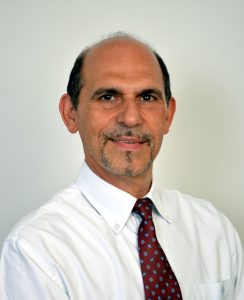
Dr. George J. Georgiou
Dr. George J. Georgiou, Ph.D., N.D., D.Sc (AM), M.Sc., B.Sc, is a world-renowned expert in the field of holistic medicine and detoxification. As the inventor of the highly acclaimed Dr. Georgiou's Heavy Metal Detox Protocol, and the main product, HMD™ (Heavy Metal Detox), he has revolutionized the approach to natural heavy metal detoxification. With over 35 years of experience in natural medicine, he has authored 23 books, including the comprehensive guide 'Curing the Incurable with Holistic Medicine,' which offers invaluable insights and over 700 scientific references. Dr. Georgiou's groundbreaking work is sought after by individuals and practitioners worldwide through his Da Vinci Institute of Holistic Medicine and Da Vinci Holistic Health Center based in Larnaca, Cyprus.



